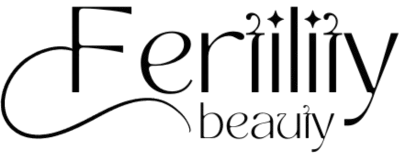Table of Contents
Introduction to Women’s Health and Wellness
In today’s fast-paced world, women’s health and wellness have become increasingly important topics of discussion. Women are often juggling multiple responsibilities—work, family, social commitments—and all too often, their health takes a backseat. However, adopting a holistic approach to health and wellness isn’t just a trend; it’s essential for living a balanced, fulfilling life. By understanding what true wellness looks like and how to achieve it, women can take control of their wellbeing and make positive, lasting changes.
Defining Health and Wellness: A Holistic Approach
Health and wellness encompass much more than just physical fitness or dieting. True wellness addresses the mind, body, and spirit, fostering harmony among these interconnected aspects. A holistic approach to wellness means looking beyond the absence of illness and instead focusing on preventative care, mental health, emotional stability, and personal fulfillment. This multidimensional approach empowers women to nurture themselves in every aspect of their lives.
Why Women’s Health Deserves Special Focus
Women experience unique health challenges that stem from hormonal changes, reproductive health, and societal pressures. From menstruation to menopause, pregnancy to perimenopause, these life stages come with specific health needs. Addressing women’s health in a focused way ensures that these concerns are not only acknowledged but managed effectively. Additionally, women are more likely to experience certain health conditions like autoimmune disorders, anxiety, and depression, making a tailored wellness plan even more vital.
The Benefits of Adopting a Wellness Lifestyle
Committing to a wellness lifestyle offers profound benefits. For women, it can lead to increased energy, improved hormonal balance, enhanced mental clarity, and better emotional resilience. Beyond the physical and mental advantages, adopting such a lifestyle builds self-awareness, helping women recognize their own needs and prioritize self-care. Ultimately, a wellness lifestyle fosters a deeper connection to oneself and an enhanced quality of life.
Key Components of a Women’s Health and Wellness Program
Nutrition for Optimal Health: Eating for Vitality and Balance
What you eat plays a critical role in maintaining overall health, especially for women. Nutrition is not just about staying slim or counting calories; it’s about nourishing your body with the right balance of nutrients to support hormonal health, energy levels, and long-term vitality.
Essential Nutrients for Women’s Health at Every Age
Women’s bodies require different nutrients at different life stages. During childbearing years, folic acid and iron are crucial, while calcium and vitamin D become more important as women age to maintain bone health. Omega-3 fatty acids support brain function and reduce inflammation, while B vitamins help regulate mood and energy. A well-rounded diet rich in essential nutrients is foundational to maintaining health.
The Power of Whole Foods: How Nutrition Impacts Hormonal Balance
Whole foods—such as fresh fruits, vegetables, lean proteins, and healthy fats—offer unparalleled benefits for hormonal health. Processed foods and sugar can cause blood sugar imbalances and lead to hormonal disruptions. Eating a diet rich in antioxidants, fiber, and phytonutrients helps regulate hormones naturally and keeps women feeling balanced and energized.
Creating a Personalized Meal Plan for Long-Term Wellness
One size does not fit all when it comes to nutrition. Creating a personalized meal plan involves assessing individual needs, preferences, and lifestyle. Tailoring a plan to include nutrient-dense foods while being mindful of food sensitivities or allergies will support long-term health goals. Incorporating flexibility into meal planning allows for sustainable habits without feelings of restriction.
Fitness for Strength, Flexibility, and Longevity
Exercise is a pillar of any wellness lifestyle, providing numerous benefits for both body and mind. However, fitness routines should be tailored to fit the individual needs of women at different life stages.
How Exercise Benefits Women’s Physical and Mental Health
Regular exercise is essential for maintaining cardiovascular health, boosting metabolism, and strengthening muscles and bones. Additionally, physical activity promotes the release of endorphins, the body’s natural mood boosters, which can help alleviate stress and anxiety. For women, exercise is also crucial for managing weight and preventing conditions such as osteoporosis and heart disease.
Finding Your Perfect Workout: Strength, Cardio, and Flexibility
There’s no one “right” workout for every woman. Strength training helps build muscle mass and supports bone density, while cardiovascular exercises like running or swimming improve heart health and endurance. Flexibility-focused workouts, such as yoga or Pilates, enhance mobility and promote relaxation. The key is finding a balanced routine that incorporates all three elements—strength, cardio, and flexibility—to support overall wellness.
Fitness Routines for Different Life Stages and Fitness Levels
As women age, their fitness needs evolve. Younger women may focus on high-intensity workouts, while older women might prioritize low-impact exercises to protect joints. A tailored approach to fitness ensures that women can stay active, regardless of age or fitness level, and maintain their physical health throughout their lives.
Mental and Emotional Wellness: Managing Stress and Enhancing Peace
In a world full of constant distractions and demands, mental and emotional wellbeing can often be overlooked. However, emotional health is deeply connected to physical health, and managing stress is a key component of wellness.
The Mind-Body Connection: How Mental Health Impacts Physical Wellbeing
Stress, anxiety, and unresolved emotions can manifest physically in the body as headaches, muscle tension, or digestive issues. By acknowledging the mind-body connection, women can take proactive steps to manage their mental health and prevent these physical symptoms from taking hold.
Stress-Relief Techniques: Mindfulness, Meditation, and Relaxation
Incorporating mindfulness and meditation into daily life helps women stay grounded and focused, reducing feelings of overwhelm. Simple techniques such as deep breathing exercises, progressive muscle relaxation, or guided meditation can instantly calm the mind and relax the body. These practices encourage presence and mental clarity, allowing women to approach challenges with a sense of peace.
Building Emotional Resilience: Cultivating Gratitude and Positive Thinking
Emotional resilience involves the ability to recover quickly from challenges or setbacks. By cultivating gratitude and focusing on positive thinking, women can train their minds to bounce back from adversity and develop a more optimistic outlook on life. Daily gratitude practices, whether through journaling or verbal affirmations, help reframe the mind and increase emotional strength.
Customizing the Program for Different Life Stages
Wellness in Your 20s and 30s: Building a Strong Foundation
These are the years to establish healthy habits that will carry you through the rest of your life. Building a solid foundation now with proper nutrition, exercise, and stress management can prevent chronic conditions later on.
Supporting Fertility and Hormonal Health Through Lifestyle Choices
For women in their 20s and 30s, supporting reproductive health is crucial. A diet rich in antioxidants, healthy fats, and nutrient-dense foods can improve fertility and stabilize hormones, while stress management and regular exercise enhance overall reproductive health.
Managing Stress and Finding Work-Life Balance in a Busy Decade
The 20s and 30s often come with career growth, family building, and social obligations, leading to stress overload. By learning to set boundaries, prioritize self-care, and balance professional and personal life, women can better manage this hectic period and prevent burnout.
Navigating Your 40s and 50s: Wellness Strategies for Midlife
As women enter midlife, their health priorities shift. Menopause and hormonal changes require a reevaluation of wellness strategies.
Perimenopause and Menopause: What You Need to Know
During perimenopause, the body begins to produce less estrogen, leading to symptoms such as hot flashes, mood swings, and sleep disturbances. Nutrition and exercise can alleviate these symptoms, and regular health check-ups become more important than ever.
Maintaining Bone Density, Heart Health, and Muscle Mass
As estrogen levels decline, women are at greater risk for osteoporosis and heart disease. Strength training, weight-bearing exercises, and a diet rich in calcium and vitamin D are essential to protect bone and heart health.
Aging Gracefully: Wellness in Your 60s and Beyond
Wellness doesn’t stop at retirement age. In fact, it becomes even more important as women age, with a focus on maintaining mobility, cognitive function, and social engagement.
Focusing on Joint Health, Mobility, and Cognitive Function
To stay active and independent, joint health and mobility must be prioritized. Stretching exercises, low-impact activities, and a nutrient-dense diet that supports brain health can help women stay sharp and agile.
Staying Active and Engaged: Social and Physical Wellbeing
Staying socially connected is vital for mental health in older age. Joining fitness groups, volunteering, or participating in hobbies fosters both physical and emotional wellbeing.
Sustaining a Long-Term Wellness Lifestyle
Creating Healthy Habits and Setting Achievable Goals
Maintaining a wellness lifestyle is about consistency. By setting realistic and achievable goals, women can build healthy habits that last a lifetime.
How to Build Consistency and Stay Motivated
Breaking larger goals into smaller, manageable steps ensures success. Celebrate each milestone, no matter how small, to stay motivated on your wellness journey.
Tracking Progress and Celebrating Small Wins
Regularly monitoring your progress not only provides insight into your achievements but also highlights areas for improvement. Keep a wellness journal or use a health app to track your habits, fitness goals, and emotional wellbeing.
Integrating Self-Care into Daily Life
Self-care is not an indulgence; it’s a necessity for long-term health. Rest, recovery, and daily rituals that nurture mental and physical health are fundamental.
The Importance of Rest and Recovery
Sleep and relaxation allow the body to repair and regenerate, making them as important as exercise and nutrition. Prioritize quality sleep and allow time for recovery after strenuous activities.
Nurturing Your Mental and Physical Health through Routine Practices
Incorporating small acts of self-care into your daily routine—whether through skincare, journaling, or a quiet moment with a cup of tea—fosters inner calm and sustained
health.
The Role of Community in Health and Wellness
Finding Support and Accountability: Wellness Groups and Networks
Joining a wellness group or finding an accountability partner can help you stay on track with your goals. Community provides encouragement, advice, and motivation when you need it most.
Sharing Your Journey: The Impact of a Positive Support System
When you surround yourself with supportive individuals who share similar goals, the path to wellness becomes more manageable. A positive support system amplifies your success and brings joy to the wellness journey.

